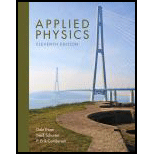
Applied Physics (11th Edition)
11th Edition
ISBN: 9780134159386
Author: Dale Ewen, Neill Schurter, Erik Gundersen
Publisher: PEARSON
expand_more
expand_more
format_list_bulleted
Concept explainers
Textbook Question
Chapter 4.3, Problem 19P
A rock is dropped from a bridge to the water below. It takes 2.40 s for the rock to hit the water. (a Fine the speed (in m/s) of the rock as it hits the water. (b) How high (in metres) is the bridge above the water?
Expert Solution & Answer
Trending nowThis is a popular solution!

Students have asked these similar questions
If it takes 3s for a ball to strike the ground when it is released from rest, determine the height in meters of the building from which it was released. Also, what is the velocity of the ball when it strikes the ground?
A engineer was accidentally thrown(downwards) overboard at an initial velocity of 6m.sand was in complete free fall. Assuming from the railing to the surface of the water is 30m. howmany seconds does it take before he hits the water?
If a projectile is fired straight up at a speed of 30 m/s, the total time to return to its starting point is about
Chapter 4 Solutions
Applied Physics (11th Edition)
Ch. 4.1 - Find the average speed (in the given units) of an...Ch. 4.1 - Find the average speed (in the given units) of an...Ch. 4.1 - Find the average speed (in the given units) of an...Ch. 4.1 - Find the average speed (in the given units) of an...Ch. 4.1 - Find the average speed (in the given units) of an...Ch. 4.1 - Find the average speed (in mi/h) of a racing car...Ch. 4.1 - While driving at 90km/h, how far can you travel in...Ch. 4.1 - While driving at 90km/h, how far (in metres) do...Ch. 4.1 - An automobile is traveling at 55 mi/h. Find its...Ch. 4.1 - An automobile is traveling at 22.0 m/s. Find its...
Ch. 4.1 - A semi-trailer truck traveling 100km/h continues...Ch. 4.1 - A flatbed truck travels for 3.85 hat 105 km/h. How...Ch. 4.1 - The average speed of a garbage truck is 60.0 km/h....Ch. 4.1 - A highway maintenance truck has an average speed...Ch. 4.1 - Find the velocity for each displacement and time....Ch. 4.1 - Find the velocity for each displacement and time....Ch. 4.1 - Find the velocity for each displacement and time....Ch. 4.1 - Find the velocity for each displacement and time....Ch. 4.1 - Find the velocity for each displacement and time....Ch. 4.1 - Find the velocity for each displacement and time....Ch. 4.1 - Mitwaukee is 121 mi (air miles) due west of Grand...Ch. 4.1 - Telluride, Colorado, is 45 air miles at 11 east of...Ch. 4.1 - In Problems 23-30, assume that the planes new...Ch. 4.1 - In Problems 23-30, assume that the planes new...Ch. 4.1 - In Problems 23-30, assume that the planes new...Ch. 4.1 - In Problems 23-30, assume that the planes new...Ch. 4.1 - In Problems 23-30, assume that the planes new...Ch. 4.1 - In Problems 23-30, assume that the planes new...Ch. 4.1 - In Problems 23-30, assume that the planes new...Ch. 4.1 - In Problems 23-30, assume that the planes new...Ch. 4.2 - All automobile changes speed as shown. Find its...Ch. 4.2 - All automobile changes speed as shown. Find its...Ch. 4.2 - All automobile changes speed as shown. Find its...Ch. 4.2 - All automobile changes speed as shown. Find its...Ch. 4.2 - All automobile changes speed as shown. Find its...Ch. 4.2 - All automobile changes speed as shown. Find its...Ch. 4.2 - A dragster starts from rest and reaches a speed of...Ch. 4.2 - A car accelerates from 25 mi/h to 55 mi/h in 4.5...Ch. 4.2 - A train accelerates from 10km/h to 110km/h 2 min...Ch. 4.2 - A plane a accelerates at 30.0 ft/s2 for 3.30 s....Ch. 4.2 - A plane a accelerates at 30.0 ft/s2 for 3.30 s....Ch. 4.2 - A rocket accelerates at 10.0 m/s2 from rest...Ch. 4.2 - A rocket accelerates at 10.0 m/s2 from rest...Ch. 4.2 - How long (in seconds) does it take for a rocket...Ch. 4.2 - What is the acceleration of a road grader that...Ch. 4.2 - What is the acceleration of a compactor that goes...Ch. 4.2 - How long (in seconds) does it take for a truck...Ch. 4.2 - How long (in seconds) does it take for a car...Ch. 4.2 - A bullcozer accelerates from rest to 3.03 m/s in...Ch. 4.2 - A pickup truck pulling a trailer accelerates at...Ch. 4.2 - The speed of a delivery van increases from 2.00...Ch. 4.2 - A go-cart roils backward down a driveway. We...Ch. 4.2 - A stock car is moving at 25.0 m/s when the driver...Ch. 4.2 - If the car in Problem 23 took twice as long to...Ch. 4.2 - If the car in Problem 23 was going twice as fast...Ch. 4.2 - If the car in Problem 23 was going twice the speed...Ch. 4.3 - Substitute in the given equation and find the...Ch. 4.3 - Substitute in the given equation and find the...Ch. 4.3 - Substitute in the given equation and find the...Ch. 4.3 - Substitute in the given equation and find the...Ch. 4.3 - Substitute in the given equation and find the...Ch. 4.3 - The average velocity of a mini-bike is 15.0 km/h....Ch. 4.3 - A sprinter starting from rest reaches a final...Ch. 4.3 - A coin is dropped with no initial velocity. Its...Ch. 4.3 - A front endloader accelerates from rest to 1.75...Ch. 4.3 - A mechanic test driving a cat that she has just...Ch. 4.3 - A rocket lifting off from earth has an average...Ch. 4.3 - The final velocity of a truck is 74.0 ft/s. If it...Ch. 4.3 - A truck accelerates from 85 km/h to 120km/h in 9.2...Ch. 4.3 - How long does it take a rock to drop 95.0 m from...Ch. 4.3 - An aircraft with a landing speed of 295 km/h lands...Ch. 4.3 - A ball is thrown downward from the top of a...Ch. 4.3 - A car is traveling at 70km/h. It then uniformly...Ch. 4.3 - A car is traveling at 60km/h. It then accelerates...Ch. 4.3 - A rock is dropped from a bridge to the water...Ch. 4.3 - A bullet is fired vertically upward from a gun and...Ch. 4.3 - A bullet is fired vertically upward from a gun...Ch. 4.3 - A rock is thrown down with an initial speed of...Ch. 4.3 - John stands at the edge of a deck that is 25.0 m...Ch. 4.3 - John stands at the edge of a deck that is 40.0 m...Ch. 4.3 - John is standing on a steel beam 255.0 ft above...Ch. 4.3 - Kurt s standing on a steel beam 275.0 ft above the...Ch. 4.3 - One ball is dropped from a cliff. A second bail is...Ch. 4.3 - A car with velocity 2.00 m/s at t = 0 accelerates...Ch. 4.3 - A truck moving at 30.0 Km/h accelerates at a...Ch. 4.3 - A bus accelerates from rest at a constant 5.50...Ch. 4.3 - A motorcycle stows from 22.0 m/s to 3.00 m/s with...Ch. 4.4 - Find the horizontal range for each projectile with...Ch. 4.4 - Find the horizontal range for each projectile with...Ch. 4.4 - Find the horizontal range for each projectile with...Ch. 4.4 - Find the horizontal range for each projectile with...Ch. 4.4 - Find the horizontal range for each projectile with...Ch. 4.4 - Draw a conclusion about range and angles based on...Ch. 4.4 - Part or military training involves aiming and...Ch. 4.4 - A faulty fireworks rocket launches but never...Ch. 4.4 - An outfielder throws a baseball at a speed of...Ch. 4.4 - A bearing rolls off a 1.40-m-high workbench with...Ch. 4.4 - A mechanics socket rolls off a 1.50-m-high bench...Ch. 4 - Velocity is a. the distance traveled per unit of...Ch. 4 - A large heavy rock and a small marble are dropped...Ch. 4 - One ball1s thrown horizontally while another is...Ch. 4 - At what launch angle with the ground does a...Ch. 4 - Where in a projectiles path would its speed be the...Ch. 4 - Explain your answer to Question 2. 2. A large...Ch. 4 - Explain your answer to Question 3. 3. One ball1s...Ch. 4 - Distinguish between velocity and speed.Ch. 4 - Is velocity always constant?Ch. 4 - Why are vectors important in measuring motion?...Ch. 4 - Give three familiar examples of acceleration.Ch. 4 - Distinguish among acceleration, deceleration, and...Ch. 4 - State the values of the acceleration due to...Ch. 4 - A boat travels at 17.0 mi/h for 1.50 h. How far...Ch. 4 - A commercial jet flies at 550 mi /h for 3000mi....Ch. 4 - A plane flies north at 215 km/h. A wind from the...Ch. 4 - A glider flies southeast (at 320.0) at 25.0 km/h....Ch. 4 - A runner starts from rest and attains 8 speed of 8...Ch. 4 - A race car goes from rest to 150 km/h with an...Ch. 4 - A sailboat has an initial velocity of 10.0 km/h...Ch. 4 - A skateboarder starts from rest and accelerates at...Ch. 4 - A plane has an average velocity of 500km/h How...Ch. 4 - A train has a final velocity of 110 km/h. It...Ch. 4 - A boulder is rolling down a hill at 8.00 m/s...Ch. 4 - A truck accelerates from rest to 120 km/h in 13 s....Ch. 4 - An airplane reaches a velocity of 71.0 m/s when it...Ch. 4 - An airplane accelerates at 3.00 m/s2 from a...Ch. 4 - A bullet is fired vertically upward and reaches a...Ch. 4 - A rock is thrown down with an initial speed of...Ch. 4 - A shot put is hurled at 9.43 m/s at an angle of...Ch. 4 - An archer needs to hit a bulls eye on a target at...Ch. 4 - Amy walks at an average speed of 1.75 m/s toward...Ch. 4 - A novice captain is pointing his ferryboat...Ch. 4 - Anette is a civil engineer and needs to determine...Ch. 4 - As a movie stunt coordinator, you need to be sure...Ch. 4 - As a newspaper delivery boy, Jason needs to know...
Additional Science Textbook Solutions
Find more solutions based on key concepts
Which of the listed objects would experience the largest change in orbital speed and which would experience the...
Lecture- Tutorials for Introductory Astronomy
41. A hollow metal sphere has 6 cm and 10 cm inner and outer radii, respectively. The surface charge density on...
Physics for Scientists and Engineers: A Strategic Approach with Modern Physics (4th Edition)
16. (II) A golf ball of mass 0.045 kg is hit off the lee at a speed of 38 m/s. The golf club was in contact wit...
Physics: Principles with Applications
3. What is free-fall, and why does it make you weightless? Briefly describe why astronauts are weightless in th...
The Cosmic Perspective (8th Edition)
3. What is free-fall, and why does it make you weightless? Briefly describe why astronauts are weightless in th...
The Cosmic Perspective
Two identical bubbles of gas form at the bottom of a lake, then rise to the surface. Because the pressure is mu...
An Introduction to Thermal Physics
Knowledge Booster
Learn more about
Need a deep-dive on the concept behind this application? Look no further. Learn more about this topic, physics and related others by exploring similar questions and additional content below.Similar questions
- If the speed of the lifeguard on sand is 4.00 m/s and she swims at 1.00 m/s, how much time will she save by taking the bent path?arrow_forwardIf a rocket is shot and lands 200m away, how long was it in the air if the initial velocity was 33 m/s and the angle is 75?arrow_forwardA player passes a basketball to another player who catches it atthe same level from which it was thrown. The initial speed of theball is 7.1 m>s, and it travels a distance of 4.6 m. What were (a) theinitial direction of the ball and (b) its time of flight?arrow_forward
- A girl standing on a bridge throws a stone vertically downward with an initial velocity of 15.0 m/s into the river below. If the stone hits the water 2.00 seconds later, what is the height of the bridge above the water?arrow_forwarda ball is thrown off a cliff at 7 m/s. if the ball takes 1.45 s to reach the ground, how high off of the ground is the cliff?arrow_forwardA stone is thrown from the top of a building upward at an angle of 30 degrees with respect of the horizontal, and with an intial speed of 20m/s. If the height of the building is 45 meters, how long is the stone in flight, how far does it land, and what is the speed just before impact?arrow_forward
- A football is kicked with an initial velocity of 10 m/s at an angle of 25°. If it hits the ground 1.5s later, how many meters does it travel?arrow_forwarda certain handgun with a muzzle velocity of 325 m/s is fired straight up. neglecting air resistance, how long will it take for the bullet to fall back to hit the shooter in the head?arrow_forwardYou drop a rock straight down into a well and hear the sound of the hitting the water 7.0 s later. If the speedof sound is 340 m/s, how deep is the well?arrow_forward
- how far will a ball be kicked if it is kicked at 7m/s at an angle of 22 and is in the air for 11 seconds?arrow_forwardThe height of an average batter is 1.8 m, when a ball is hit it acquires a maximum speed of 50 mill / h. How high above the ground should the roof of a stadium be built so that it just touches the roofarrow_forwardIf a projectile is going up at 40 m/s how long will it take to reach the top?arrow_forward
arrow_back_ios
SEE MORE QUESTIONS
arrow_forward_ios
Recommended textbooks for you
 College PhysicsPhysicsISBN:9781305952300Author:Raymond A. Serway, Chris VuillePublisher:Cengage Learning
College PhysicsPhysicsISBN:9781305952300Author:Raymond A. Serway, Chris VuillePublisher:Cengage Learning University Physics (14th Edition)PhysicsISBN:9780133969290Author:Hugh D. Young, Roger A. FreedmanPublisher:PEARSON
University Physics (14th Edition)PhysicsISBN:9780133969290Author:Hugh D. Young, Roger A. FreedmanPublisher:PEARSON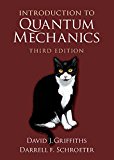 Introduction To Quantum MechanicsPhysicsISBN:9781107189638Author:Griffiths, David J., Schroeter, Darrell F.Publisher:Cambridge University Press
Introduction To Quantum MechanicsPhysicsISBN:9781107189638Author:Griffiths, David J., Schroeter, Darrell F.Publisher:Cambridge University Press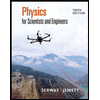 Physics for Scientists and EngineersPhysicsISBN:9781337553278Author:Raymond A. Serway, John W. JewettPublisher:Cengage Learning
Physics for Scientists and EngineersPhysicsISBN:9781337553278Author:Raymond A. Serway, John W. JewettPublisher:Cengage Learning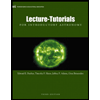 Lecture- Tutorials for Introductory AstronomyPhysicsISBN:9780321820464Author:Edward E. Prather, Tim P. Slater, Jeff P. Adams, Gina BrissendenPublisher:Addison-Wesley
Lecture- Tutorials for Introductory AstronomyPhysicsISBN:9780321820464Author:Edward E. Prather, Tim P. Slater, Jeff P. Adams, Gina BrissendenPublisher:Addison-Wesley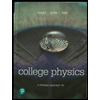 College Physics: A Strategic Approach (4th Editio...PhysicsISBN:9780134609034Author:Randall D. Knight (Professor Emeritus), Brian Jones, Stuart FieldPublisher:PEARSON
College Physics: A Strategic Approach (4th Editio...PhysicsISBN:9780134609034Author:Randall D. Knight (Professor Emeritus), Brian Jones, Stuart FieldPublisher:PEARSON

College Physics
Physics
ISBN:9781305952300
Author:Raymond A. Serway, Chris Vuille
Publisher:Cengage Learning

University Physics (14th Edition)
Physics
ISBN:9780133969290
Author:Hugh D. Young, Roger A. Freedman
Publisher:PEARSON

Introduction To Quantum Mechanics
Physics
ISBN:9781107189638
Author:Griffiths, David J., Schroeter, Darrell F.
Publisher:Cambridge University Press

Physics for Scientists and Engineers
Physics
ISBN:9781337553278
Author:Raymond A. Serway, John W. Jewett
Publisher:Cengage Learning

Lecture- Tutorials for Introductory Astronomy
Physics
ISBN:9780321820464
Author:Edward E. Prather, Tim P. Slater, Jeff P. Adams, Gina Brissenden
Publisher:Addison-Wesley

College Physics: A Strategic Approach (4th Editio...
Physics
ISBN:9780134609034
Author:Randall D. Knight (Professor Emeritus), Brian Jones, Stuart Field
Publisher:PEARSON
Speed Distance Time | Forces & Motion | Physics | FuseSchool; Author: FuseSchool - Global Education;https://www.youtube.com/watch?v=EGqpLug-sDk;License: Standard YouTube License, CC-BY